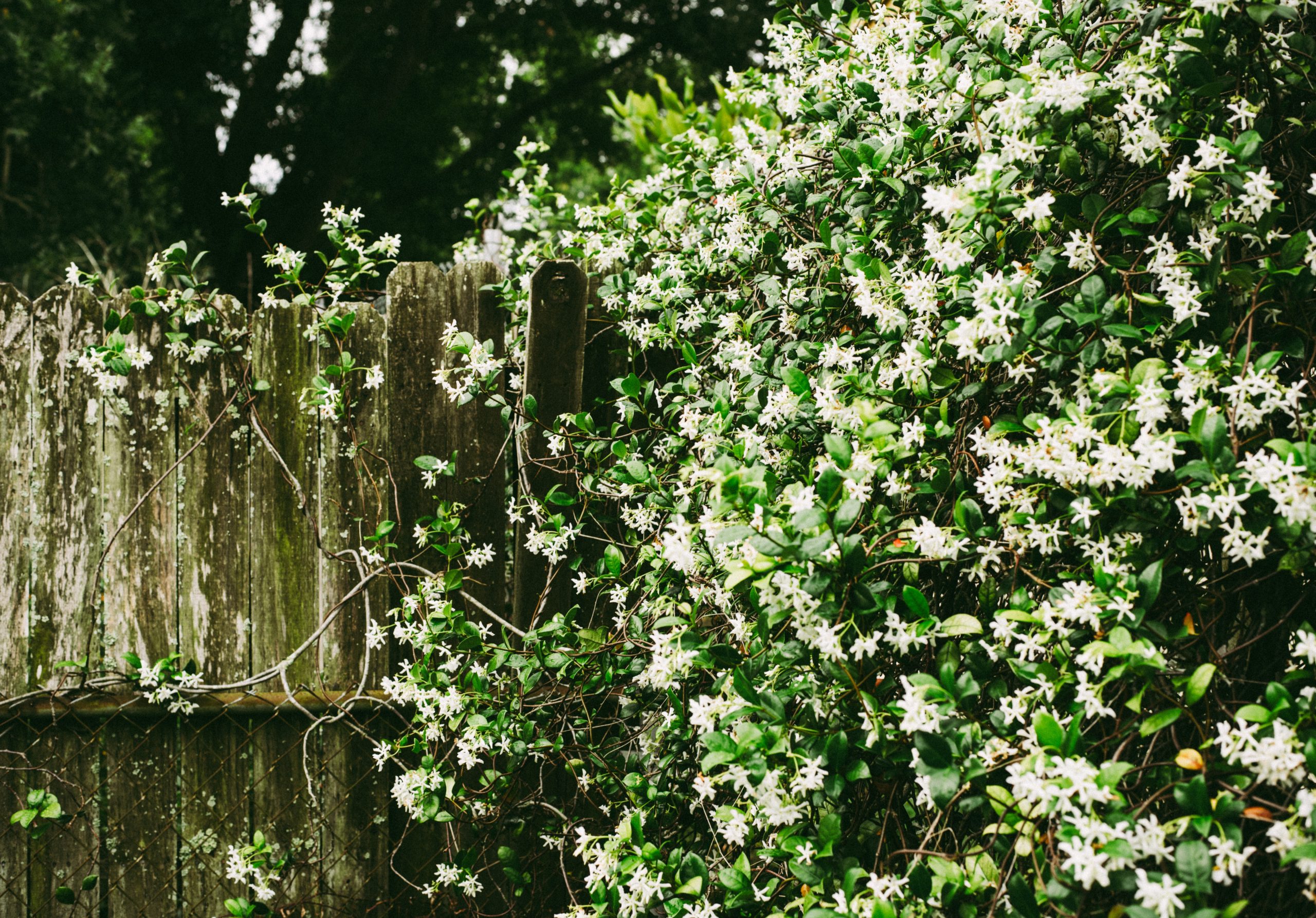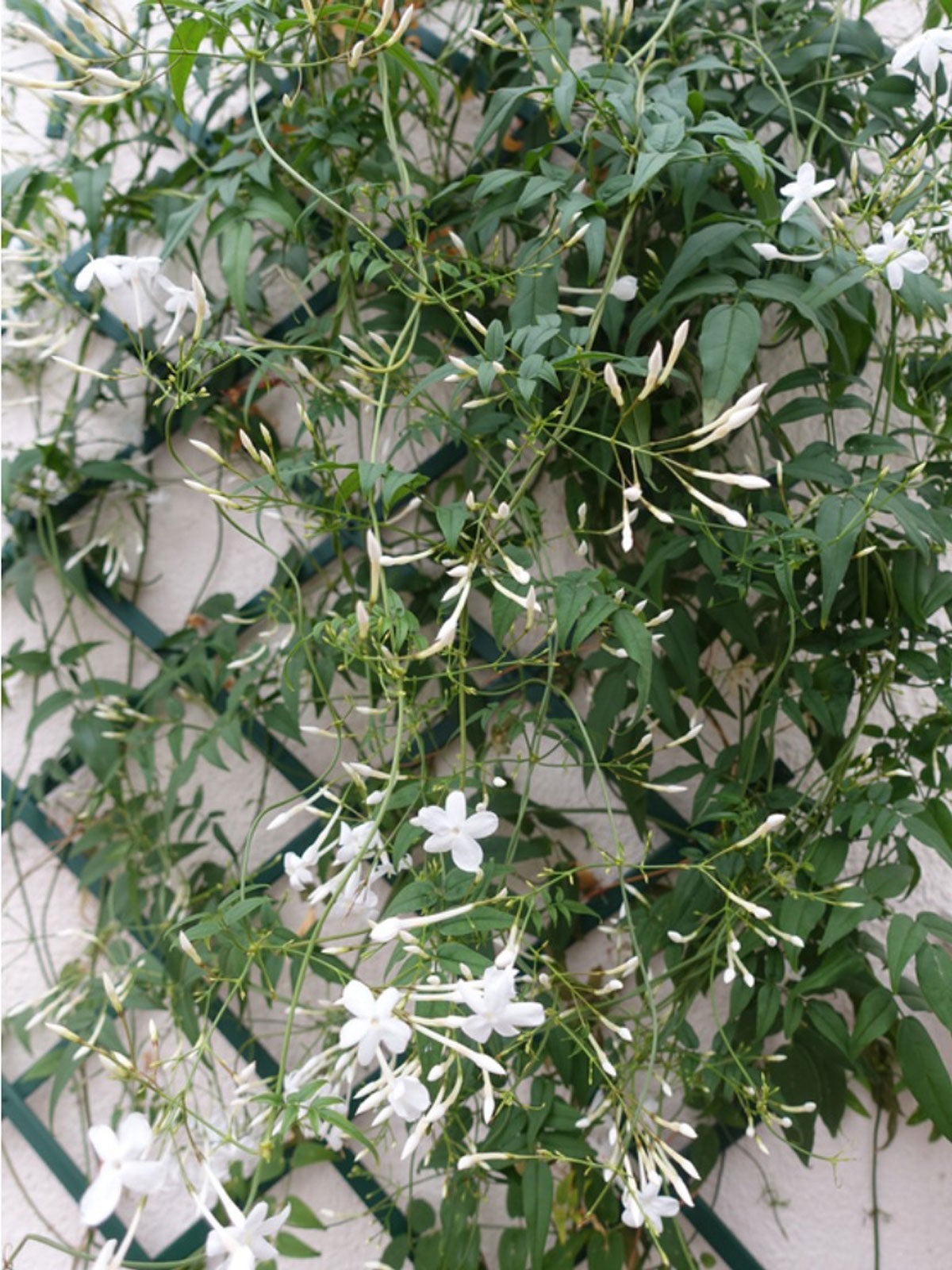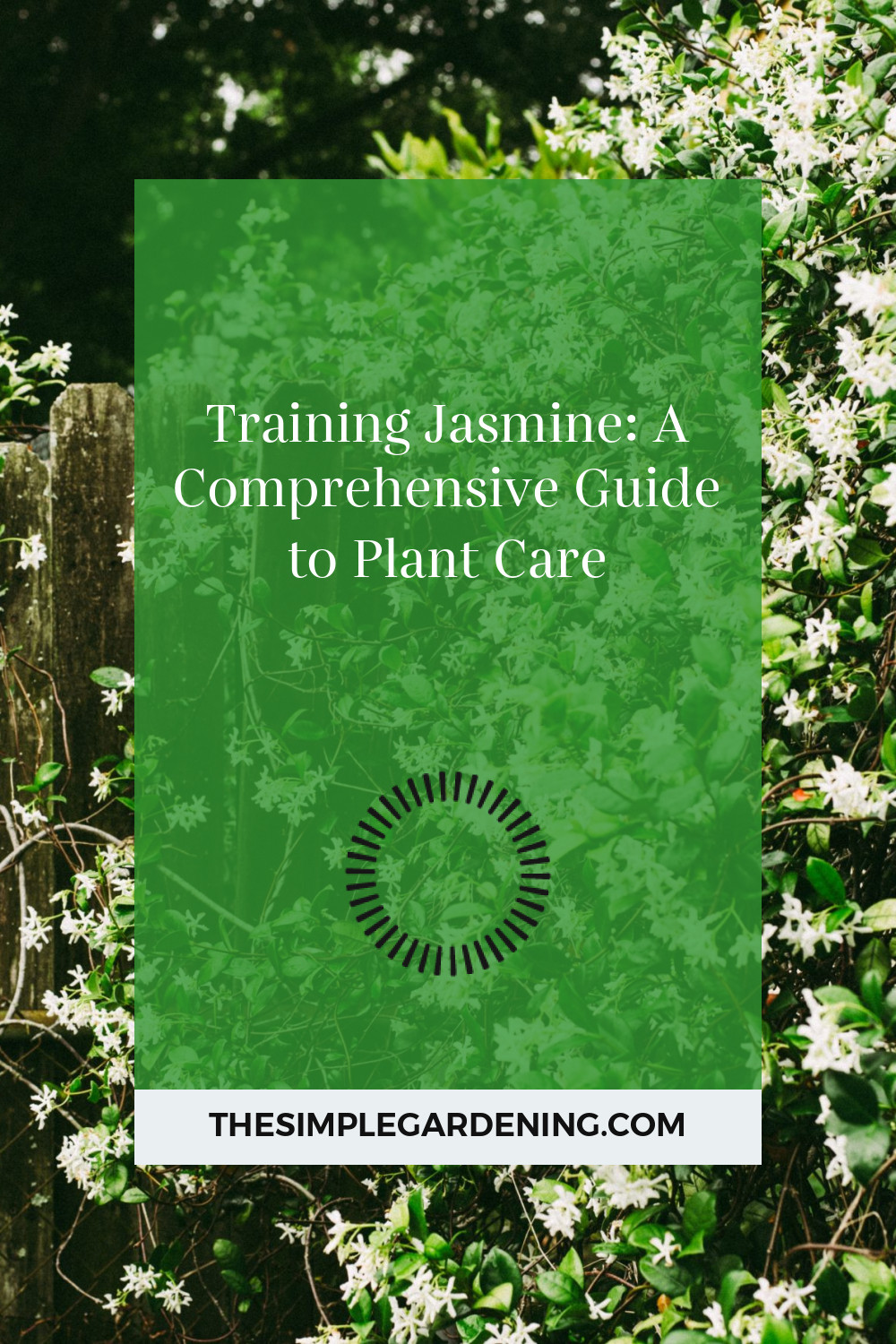Jasmine plants, renowned for their fragrant blooms and lush foliage, are beloved additions to any garden. Before delving into the intricacies of training these beauties, it’s essential to understand their diverse varieties and the importance of proper training for optimal growth and aesthetics.
Overview of Jasmine Varieties
Jasmine comes in various species, each with its unique characteristics and growth habits. From the delicate Star Jasmine (Trachelospermum jasminoides) to the exotic Arabian Jasmine (Jasminum sambac), gardeners have a plethora of options to choose from, each offering its distinct fragrance and visual appeal.
Importance of Proper Training for Growth and Aesthetics
Training jasmine plants is not merely about shaping their appearance; it’s about fostering healthy growth and maximizing their ornamental value. Well-trained jasmine vines and shrubs exhibit enhanced vigor, abundant blooms, and a tidy, attractive form that elevates the overall beauty of the garden.
Benefits of Training Jasmine Plants
| Benefits | Description |
|---|---|
| Enhanced Aesthetic Appeal | Proper training enhances the visual appeal of jasmine plants, creating a more structured and pleasing form. |
| Improved Air Quality | Well-maintained jasmine plants contribute to cleaner air by absorbing pollutants and releasing oxygen. |
| Facilitated Pollination and Fruit Production | Training encourages proper growth, leading to increased flower production and potential fruit set in some species. |

Source Image: www.jimsmowing.com.au
Understanding Jasmine Growth Patterns
To effectively train jasmine plants, it’s crucial to grasp their life cycle and the factors influencing their growth.
Life Cycle of Jasmine Plants
Jasmine plants typically follow a predictable life cycle, starting from seed germination to maturity and eventual reproduction. Understanding each stage enables gardeners to provide appropriate care and training interventions at the right time.
Factors Influencing Growth (Light, Water, Soil, Temperature)
| Factors | Influence |
|---|---|
| Light | Jasmine plants thrive in bright, indirect sunlight, although some species can tolerate partial shade. Adequate light is essential for robust growth and flowering. |
| Water | Proper watering is crucial, with jasmine plants preferring moist, well-draining soil. Overwatering can lead to root rot, while drought stress can hinder growth and flowering. |
| Soil | Jasmine plants prefer fertile, loamy soil with good drainage. Amending soil with organic matter can improve its structure and fertility, supporting healthy growth. |
| Temperature | Most jasmine species prefer warm temperatures, although some can tolerate mild frost. Extreme cold can damage tender foliage and impair growth. |
Assessing Training Needs
Before embarking on training efforts, gardeners must assess the specific needs of their jasmine plants.
Identifying Jasmine Species
Different jasmine species may require different training approaches based on their growth habits and ultimate size. By correctly identifying the species, gardeners can tailor their training strategies accordingly.
Evaluating Current Growth Patterns
Examining the existing growth patterns of jasmine plants provides insights into areas that may require intervention. Whether addressing unruly vines or sparse foliage, understanding the current state guides future training efforts effectively.
Determining Training Goals (Shape, Size, Health)
Establishing clear training goals ensures that efforts are focused and productive. Whether aiming to achieve a specific shape, control size, or promote overall plant health, defining objectives clarifies the path to successful training outcomes.

Source Image: thegardenfixes.com
Tools and Materials for Training Jasmine
| Tools and Materials | Description |
|---|---|
| Pruning Shears | Sharp, quality pruning shears are essential for precise cuts, promoting healthy growth and minimizing damage. |
| Trellises and Supports | Sturdy trellises and supports provide structural guidance for climbing jasmine vines, promoting vertical growth and preventing sprawling. |
| Ties and Fasteners | Soft ties and fasteners allow for secure attachment of branches to supports without causing damage or constriction. |
Pruning Techniques for Jasmine
Pruning is a fundamental aspect of training jasmine plants, promoting optimal growth, and maintaining desired shapes.
Timing and Frequency of Pruning
The timing of pruning depends on the specific jasmine species and its flowering habits. Generally, light pruning can be done throughout the growing season, while heavier pruning is best performed after flowering to avoid disrupting bloom production.
Types of Pruning Cuts (Pinching, Heading, Thinning)
Different pruning cuts serve distinct purposes in shaping jasmine plants:
- Pinching involves removing the tips of young shoots to encourage branching and bushier growth.
- Heading cuts are made to remove entire branches or stems, controlling the size and shape of the plant.
- Thinning cuts entail selectively removing crowded or crossing branches to improve airflow and light penetration within the plant canopy.

Source Image: gardenforindoor.com
Pruning for Shape and Structure
| Pruning Objectives | Description |
|---|---|
| Shaping | Pruning can sculpt jasmine plants into desired forms, whether it’s a compact shrub, a sprawling vine, or an elegant topiary. |
| Structural Support | Strategic pruning strengthens the overall structure of jasmine plants, reducing the risk of breakage and promoting balanced growth. |
| Flower Production | Proper pruning enhances flower production by removing dead or overgrown branches, allowing energy to be directed towards new growth and blooms. |
Training Jasmine Vines
Jasmine vines add vertical interest to the garden landscape, but they require guidance and support to flourish.
Selecting Support Structures (Trellises, Arbors, Fences)
| Support Structures | Description |
|---|---|
| Trellises | Trellises offer vertical support for climbing jasmine vines, allowing them to ascend gracefully while providing a decorative element to the garden landscape. |
| Arbors | Arbors provide a focal point for jasmine vines to climb, creating an enchanting entryway or garden feature adorned with fragrant blooms and lush foliage. |
| Fences | Fences offer a natural framework for training jasmine vines, transforming ordinary boundaries into green walls teeming with beauty and fragrance. |
Guiding Growth Along Supports
Training jasmine vines involves gently guiding their growth along selected supports, ensuring they follow the desired path and distribute evenly for optimal coverage.
Managing Lateral Branches
| Management Techniques | Description |
|---|---|
| Pruning | Regular pruning of lateral branches helps maintain a tidy appearance and prevents overcrowding, allowing ample airflow and light penetration. |
| Tying | Securing lateral branches to supports prevents them from sprawling and encourages upward growth, maximizing vertical space utilization. |
| Pinching | Pinching back excessive lateral growth promotes bushier growth and redirects energy towards producing more flowers along the main stems. |

Source Image: www.youtube.com
Training jasmine
Training Jasmine Shrubs
Jasmine shrubs offer versatility in garden design, but they require thoughtful training to achieve desired shapes and sizes.
Controlling Growth Patterns
| Growth Control Strategies | Description |
|---|---|
| Pruning | Pruning helps manage the size and shape of jasmine shrubs, preventing them from becoming leggy or overly dense while promoting a balanced form. |
| Shaping Techniques | Shaping techniques, such as selective pruning and pinching, sculpt jasmine shrubs into desired forms, such as rounded bushes, cascading mounds, or formal hedges, adding visual interest to the landscape. |

Source Image: imp.world
Encouraging Compact Growth
Encouraging compact growth in jasmine shrubs is essential for maintaining their neat appearance and maximizing flowering potential.
Training Jasmine Indoors
Jasmine plants can thrive indoors with proper care and attention, but training techniques must be adapted to suit indoor environments.
Optimizing Light Conditions
| Light Requirements | Description |
|---|---|
| Bright Indirect Light | Indoors, jasmine plants thrive in bright, indirect light near windows or under grow lights, mimicking their natural habitat and promoting healthy growth. |
| Supplemental Lighting | In areas with insufficient natural light, supplemental lighting with full-spectrum grow lights can ensure optimal light levels for indoor jasmine plants. |
Container Selection and Maintenance
| Container Considerations | Description |
|---|---|
| Size and Drainage | Selecting appropriately sized containers with drainage holes prevents waterlogging and ensures adequate aeration of the root system for healthy jasmine growth. |
| Potting Mix | Well-draining potting mixes formulated for indoor plants provide the necessary nutrients and support for jasmine plants in containers. |
| Repotting | Periodic repotting allows jasmine plants to refresh their growing medium and prevents root-bound conditions, promoting continued vigor and growth. |
Pruning and Shaping for Indoor Spaces
| Pruning Guidelines | Description |
|---|---|
| Size Management | Regular pruning controls the size of indoor jasmine plants, preventing them from outgrowing their space while promoting compact growth suitable for indoor environments. |
| Shaping Techniques | Shaping techniques such as selective pruning and pinching help maintain indoor jasmine plants’ desired form, ensuring they remain attractive and well-proportioned. |
Training Jasmine for Vertical Gardens
Vertical gardening presents unique opportunities for training jasmine plants to create stunning living walls and vertical displays.
Vertical Support Systems
| Support Systems | Description |
|---|---|
| Wall-Mounted Trellises | Wall-mounted trellises provide sturdy support for training jasmine vines vertically against walls or fences, maximizing vertical space and adding greenery to vertical surfaces. |
| Living Wall Systems | Living wall systems offer innovative solutions for creating vertical gardens, allowing jasmine plants to grow vertically in a space-saving and visually striking manner. |
Managing Growth in Limited Spaces
| Space Management Strategies | Description |
|---|---|
| Espalier Techniques | Espalier techniques involve training jasmine plants to grow flat against a support structure, such as a wall or trellis, maximizing space utilization while creating an artistic display of foliage and flowers. |
| Pruning for Space Efficiency | Pruning back excessive growth and redirecting branches allows for better space management in vertical gardens, preventing overcrowding and maintaining an organized, visually appealing arrangement. |
Creating Vertical Designs with Jasmine
| Design Ideas | Description |
|---|---|
| Cascading Displays | Jasmine vines can be trained to cascade gracefully from elevated containers or hanging baskets, adding a dynamic element to vertical gardens and balconies. |
| Tiered Planting Systems | Tiered planting systems allow for creative arrangements of jasmine plants at varying heights, creating depth and visual interest in vertical garden designs. |
Dealing with Common Training Challenges
While training jasmine plants, gardeners may encounter various challenges that require prompt attention and effective solutions.
Overgrowth and Crowding
| Challenge | Description |
|---|---|
| Overgrowth | Vigorous growth in jasmine plants can lead to overcrowding and entanglement, hindering airflow and sunlight penetration, and increasing the risk of pest and disease issues. |
| Crowding | Dense foliage and overcrowded branches can impede the development of new growth and flowers, compromising the overall health and aesthetics of jasmine plants. |
Pests and Diseases
| Common Issues | Description |
|---|---|
| Aphid Infestation | Aphids are common pests that feed on jasmine plants’ sap, causing distorted growth and yellowing leaves. Regular monitoring and prompt treatment are essential for pest control. |
| Powdery Mildew | Powdery mildew, a fungal disease, appears as a white powdery coating on jasmine leaves, affecting their photosynthesis and overall health. Proper sanitation and fungicidal treatments can help manage this issue. |
Environmental Stressors
| Stress Factors | Description |
|---|---|
| Temperature Fluctuations | Extreme temperature fluctuations, especially sudden drops in temperature, can stress jasmine plants, leading to leaf yellowing, wilting, or even damage to tender foliage. Protecting plants from drastic temperature changes and providing adequate insulation during cold snaps can mitigate stress and promote recovery. |
| Watering Issues | Inconsistent watering practices, such as overwatering or underwatering, can stress jasmine plants, causing root rot, wilting, and leaf drop. Establishing a regular watering schedule and ensuring proper drainage are crucial for maintaining optimal soil moisture levels and plant health. |

Source Image: uhobbie.com
Tips for Training Jasmine in Different Climates
Jasmine plants exhibit varying preferences and requirements depending on the climate they’re grown in. By understanding these differences, gardeners can provide tailored care for optimal results.
Tropical Environments
| Climate Considerations | Description |
|---|---|
| Warm Temperatures | Jasmine plants thrive in warm, tropical climates with consistent temperatures above 60°F (15°C), where they can grow vigorously and produce abundant blooms year-round. |
Temperate Regions
| Climate Considerations | Description |
|---|---|
| Seasonal Variability | In temperate regions with distinct seasons, jasmine plants may experience dormancy during winter months, requiring protection from frost and cold temperatures. |
Arid and Semi-Arid Zones
| Climate Considerations | Description |
|---|---|
| Water Conservation | In arid and semi-arid climates, jasmine plants must be drought-tolerant and capable of withstanding long periods without rainfall. Mulching and efficient irrigation practices help conserve soil moisture and promote plant resilience in dry conditions. |
Propagation Methods for Jasmine
Propagating jasmine plants allows gardeners to expand their collection and share the beauty of these fragrant blooms with others.
Seed Propagation
| Seed Propagation Steps | Description |
|---|---|
| Seed Collection | Collect seeds from mature jasmine plants after flowering, ensuring they are fully ripe and viable for germination. |
| Seed Preparation | Scarify seeds by gently nicking or sanding their outer coat to facilitate water absorption and enhance germination rates. Soak seeds in water overnight before sowing to soften the seed coat. |
| Sowing | Sow jasmine seeds in well-draining potting mix, covering them lightly with soil. Maintain consistent moisture and warmth to encourage germination, typically occurring within 2-3 weeks. |
Stem Cuttings
| Stem Cutting Technique | Description |
|---|---|
| Cutting Selection | Select healthy, non-flowering stems from mature jasmine plants for propagation, ensuring they are free from diseases and pests. Choose stems that are semi-hardwood, about 4-6 inches long, and have several nodes where roots can develop. |
Layering Techniques
| Layering Methods | Description |
|---|---|
| Simple Layering | Identify a low-growing branch on the jasmine plant and wound a small section of the stem by removing a strip of bark. Bury the wounded portion of the stem in soil, keeping it moist until roots form. |
| Air Layering | Select a healthy stem and make a shallow incision, then apply rooting hormone and wrap the incision with moist sphagnum moss. Enclose the moss in plastic wrap to maintain moisture until roots develop. |
Maintenance Practices for Trained Jasmine
Regular maintenance is essential to ensure trained jasmine plants remain healthy, vibrant, and free from stressors.
Watering Guidelines
| Watering Tips | Description |
|---|---|
| Frequency | Water jasmine plants deeply but infrequently, allowing the soil to dry slightly between waterings to prevent waterlogged conditions that can lead to root rot. |
| Soil Moisture | Check the moisture level of the soil regularly, aiming for consistently moist but not waterlogged conditions, especially during periods of active growth and flowering. |
Fertilization Requirements
| Fertilizer Types | Description |
|---|---|
| Balanced Formulas | Use balanced, water-soluble fertilizers formulated for flowering plants, applying them according to package instructions during the growing season to support healthy growth and abundant blooms. |
Monitoring for Signs of Stress or Disease
| Symptoms to Watch For | Description |
|---|---|
| Yellowing Leaves | Yellowing leaves may indicate nutrient deficiencies, water stress, or pest infestations, requiring prompt attention to identify and address underlying issues. |
| Leaf Drop | Excessive leaf drop can result from environmental stressors, overwatering, or diseases, necessitating thorough investigation and corrective measures to restore plant health. |
Advanced Training Techniques for Jasmine Enthusiasts
For seasoned gardeners seeking to elevate their jasmine training skills, advanced techniques offer opportunities for creative expression and mastery.
Espalier Training
Espalier training involves training jasmine plants to grow flat against a support structure, such as a wall or trellis, in intricate patterns or designs.
Topiary Techniques
Topiary techniques allow gardeners to sculpt jasmine plants into geometric shapes, animal forms, or whimsical designs, showcasing their artistic flair and horticultural expertise.
Bonsai Cultivation
Bonsai cultivation involves training jasmine plants into miniature trees through careful pruning, shaping, and root confinement, creating stunning living works of art that captivate the eye and inspire admiration.
Mastering the art of training jasmine plants requires a combination of knowledge, skill, and patience. By understanding jasmine’s growth patterns, assessing training needs, and employing appropriate techniques, gardeners can cultivate flourishing vines and shrubs that adorn their gardens with beauty and fragrance. Whether growing indoors or outdoors, in tropical climates or temperate regions, jasmine plants reward attentive care with bountiful blooms and lush foliage, enriching the garden landscape and delighting the senses. So, roll up your sleeves, grab your pruning shears, and embark on a journey to unlock the secrets of training jasmine—the rewards are well worth the effort.

